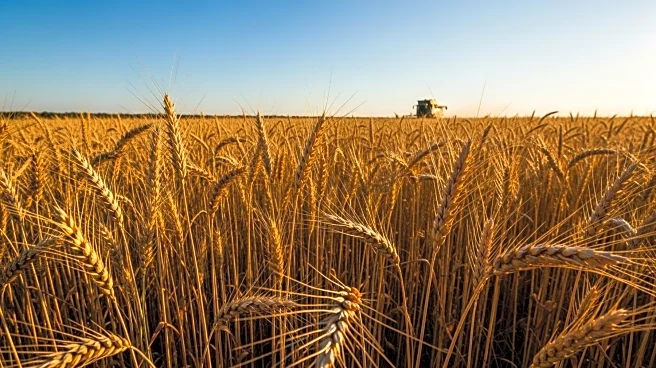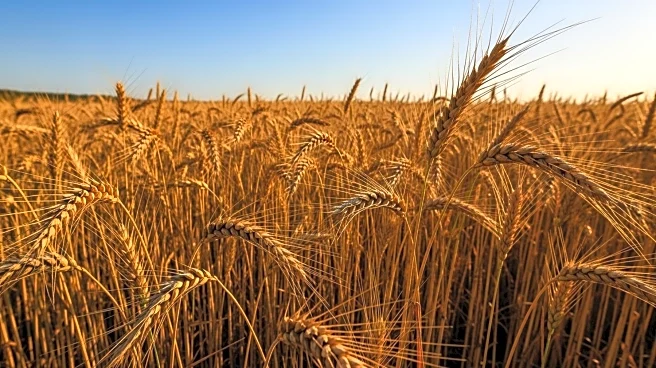What's Happening?
The U.S. Department of Agriculture (USDA) has forecasted global wheat production for the 2025-2026 marketing year at 806.9 million metric tons, an increase from the previous year's 799.9 million tons. This rise in production is partly attributed to increased output from Russia, which is projected at 83.5 million metric tons, up from 81.6 million tons in the previous year. Consultancy IKAR has further raised its outlook for Russian wheat output to 86 million metric tons. In the United States, dry weather conditions are expected to facilitate the harvest of spring wheat, with 53% already harvested, slightly below the five-year average of 54%. The winter wheat harvest is nearly complete, with 98% collected. Wheat futures have been pressured by the increased global production, with prices for September delivery dropping slightly.
Why It's Important?
The increase in global wheat production has significant implications for the agricultural sector, particularly in the United States. Higher production levels can lead to lower wheat prices, affecting farmers' profitability. The U.S. wheat harvest's progress is crucial for domestic supply and export potential, impacting the agricultural economy. Additionally, the rise in Russian wheat output may influence global market dynamics, potentially affecting U.S. export competitiveness. The USDA's forecasts are critical for stakeholders in the agricultural industry, including farmers, traders, and policymakers, as they navigate market conditions and plan for future production and sales strategies.
What's Next?
As the U.S. harvest continues, farmers and traders will closely monitor weather conditions and market prices. The completion of the spring wheat harvest will be pivotal in determining the final output and its impact on market supply. Stakeholders may also watch for any changes in global production forecasts, particularly from major producers like Russia, which could further influence market dynamics. The USDA's ongoing assessments and reports will provide essential guidance for decision-making in the agricultural sector.
Beyond the Headlines
The increased global wheat production highlights the importance of international agricultural trade and its impact on domestic markets. The U.S. agricultural sector must adapt to changing global conditions, including competition from other major producers. This situation underscores the need for strategic planning and investment in technology and infrastructure to enhance productivity and competitiveness. Additionally, environmental factors such as weather patterns play a crucial role in agricultural output, emphasizing the importance of sustainable farming practices.













